Last updated on July 27th, 2023 at 03:01 pm
What better way to commemorate the first anniversary of Peter’s Box than to share some blogging advice? In the previous post, ‘10 killer blogging mistakes beginners make in their first year of blogging‘, you will learn in detail about some common mistakes that eventually kill a blog. If you have a friend who is new to blogging, share the previous post with them; they will be thankful.
In today’s post, you will discover some shocking truths regarding your favourite office shoe. These insights will enable you to give your favourite office shoe eternal life. Read on!
Don't throw them away
I can’t believe you’re getting rid of your favourite office shoes. It didn’t even last six months, and it’s all beaten and in poor shape. Stop blaming your legs for being too hard on your favourite office shoes. Blaming the ground is needless. As you look at the tired, holey soles of your favourite office shoe, which still looks good on the outside, you wish something could be done. There is some good news. Any office shoe with a cracked sole—even a holey one—can be fixed. Let’s quickly review the different parts of a gentleman’s shoe before diving into how to make your favourite office shoes last at least 10 years.
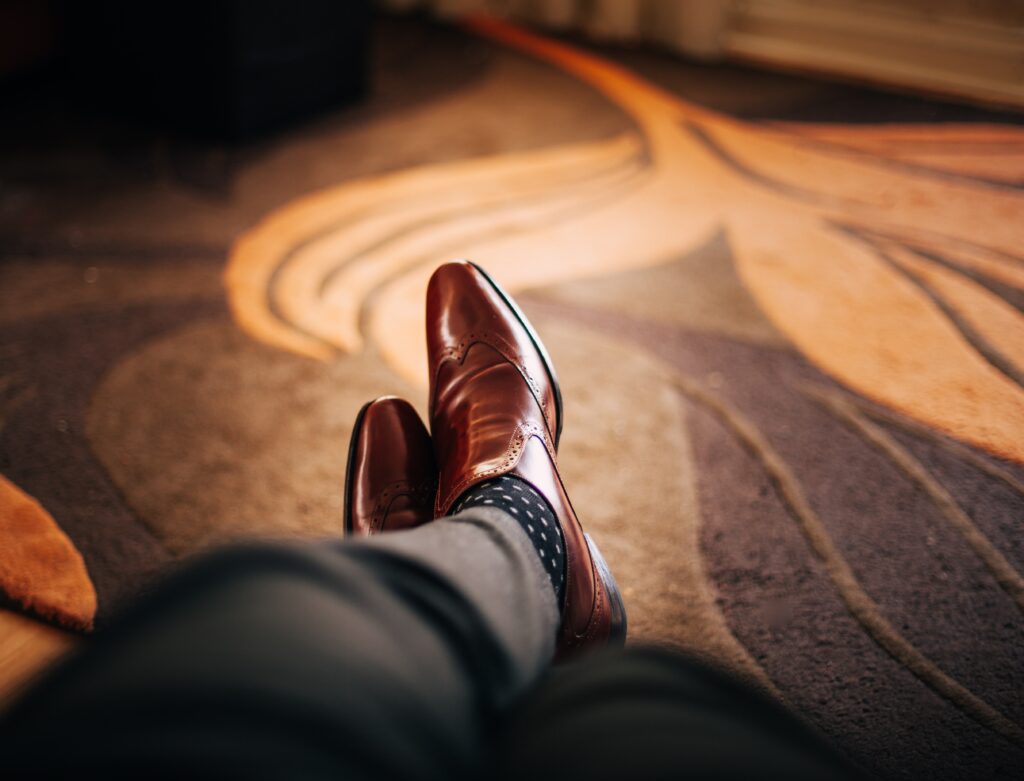
Parts of an office shoe
Heelcap: Most of the time, we pick up a shoe by hooking a finger onto the area that covers our heels. This is where the back of your foot (called a heel) rests once your leg is fitted into the shoe. This is known as the heel cap, backstay, or counter of a shoe. Let’s stick with a heel cap for the sake of this post.
Vamp: The vamp of a shoe is the section that covers the top of your foot. Most business shoes have a vamp composed of leather, rubber, synthetic material, or a mix of these materials.
Sole: The sole is the bottom part of a shoe that is always in direct contact with the ground.
Heel: A shoe’s heel is a thick attachment under the shoe’s sole where your heel sits.
Top piece: If you look closely, you’ll find that the heel of a shoe is frequently covered by another component. This is called the top piece.
Toe box: The toe box, also referred to as the toe cap, is the front end of a shoe that covers your toes.
The diagram below shows other parts of a shoe.
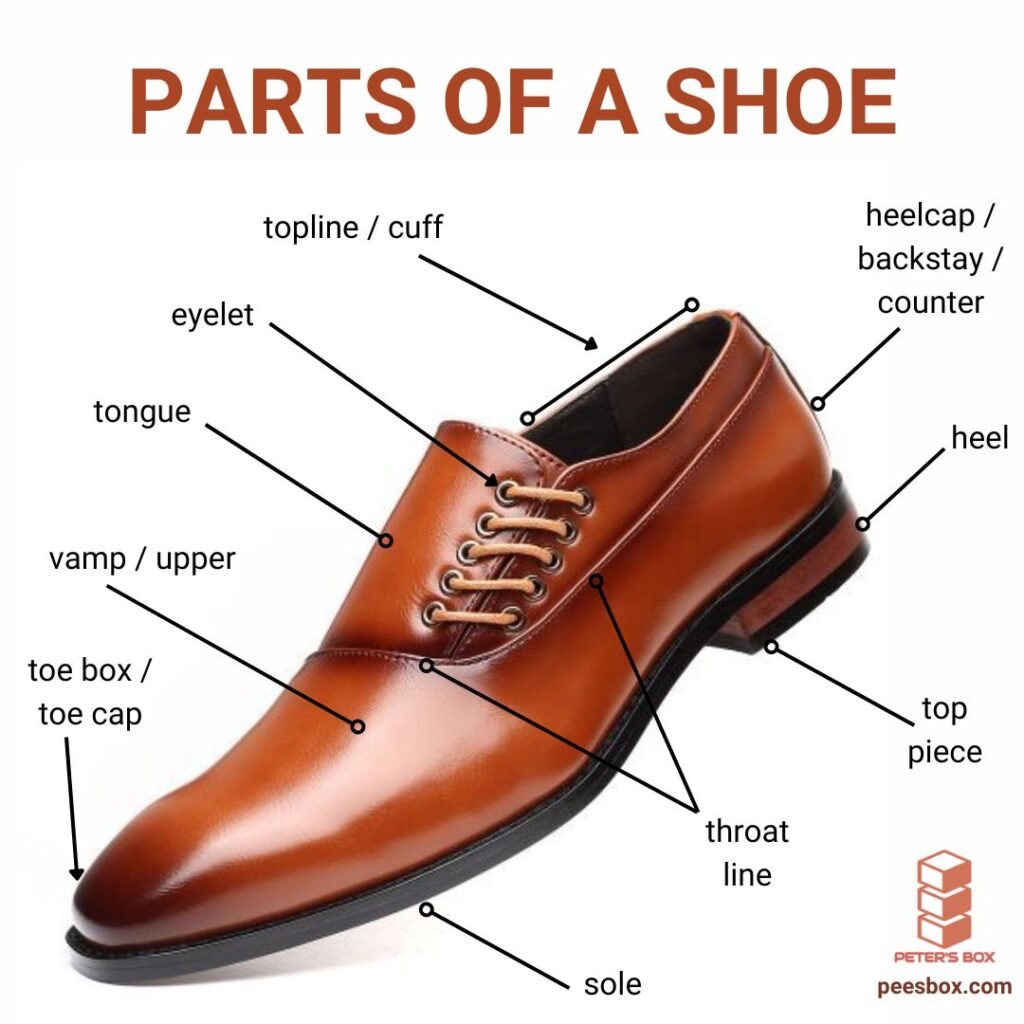
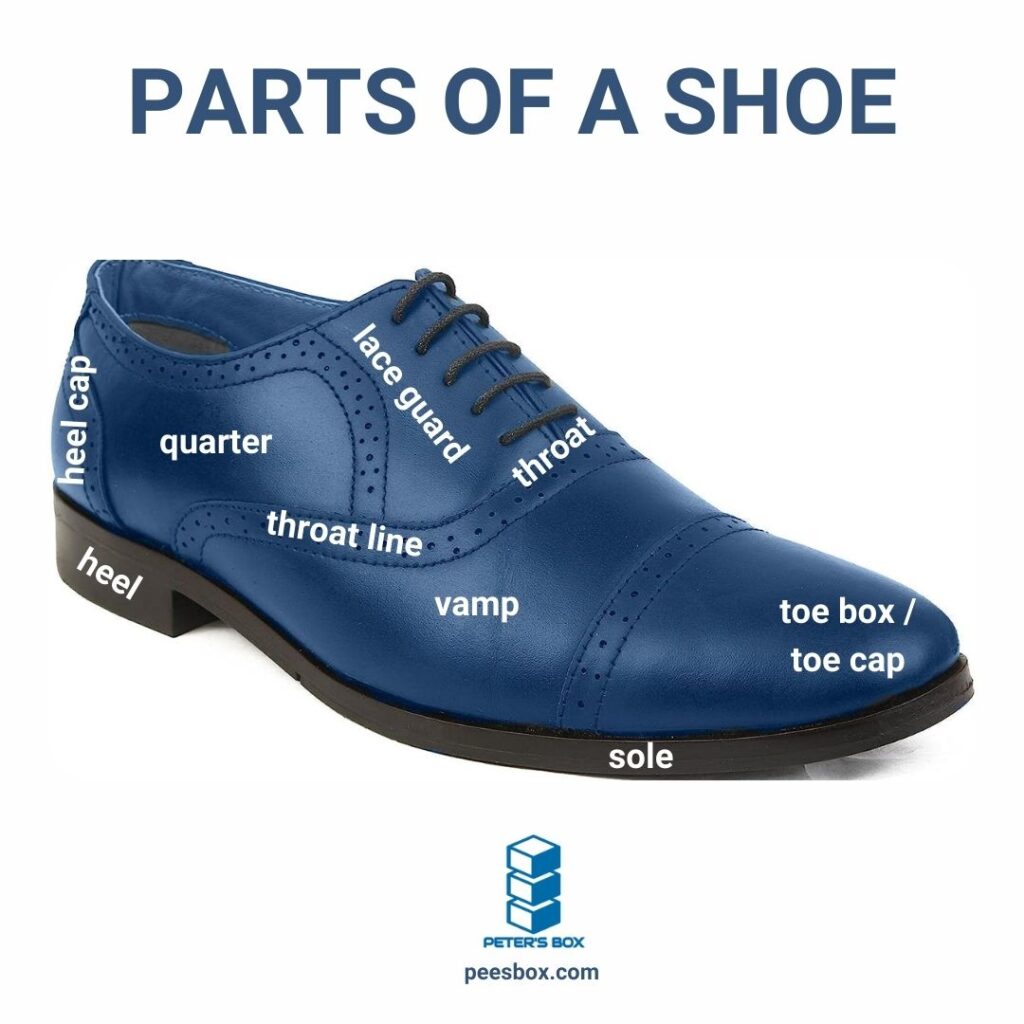
Mistreating Your Shoes
Do you remember when you first purchased your favourite office shoe? You couldn’t wait to put it on and flaunt it at work, church, or that business meeting. Now that it is no longer wearable, you can’t wait to throw it in the trash. Don’t get rid of it just yet. You can save your favourite office shoe as long as the body of the shoe is not damaged beyond repair. What about the chaffed, ripped, and holey soles? That’s the easiest part to fix. We’ll get to that shortly. Let’s start by looking at how you’ve been mistreating your shoes.
Force wearing a shoe
This is probably the biggest challenge to overcome when wearing a shoe. As you insert your leg into the shoe, your ankle will most likely not fit unless you pull back on the heel cap slightly. Stop doing that. You’re only weakening the heel cap. It’s only a matter of time before the cap ruptures. You don’t want that to happen to your favourite pair of shoes, do you? Because shoe manufacturers are aware of the ordeal we go through when wearing a shoe, they include the solution in the shoe box.
Any good manufacturer does not give you only a pair of shoes. He offers the shoes to you in a box. In the box, the shoes are stored in a shoe bag. A packet of desiccant will be found in the new pair of shoes. A shoehorn is also included in the shoe bag by the manufacturer. Everything in a shoe bag has a purpose. Don’t get rid of them, especially the shoehorn.
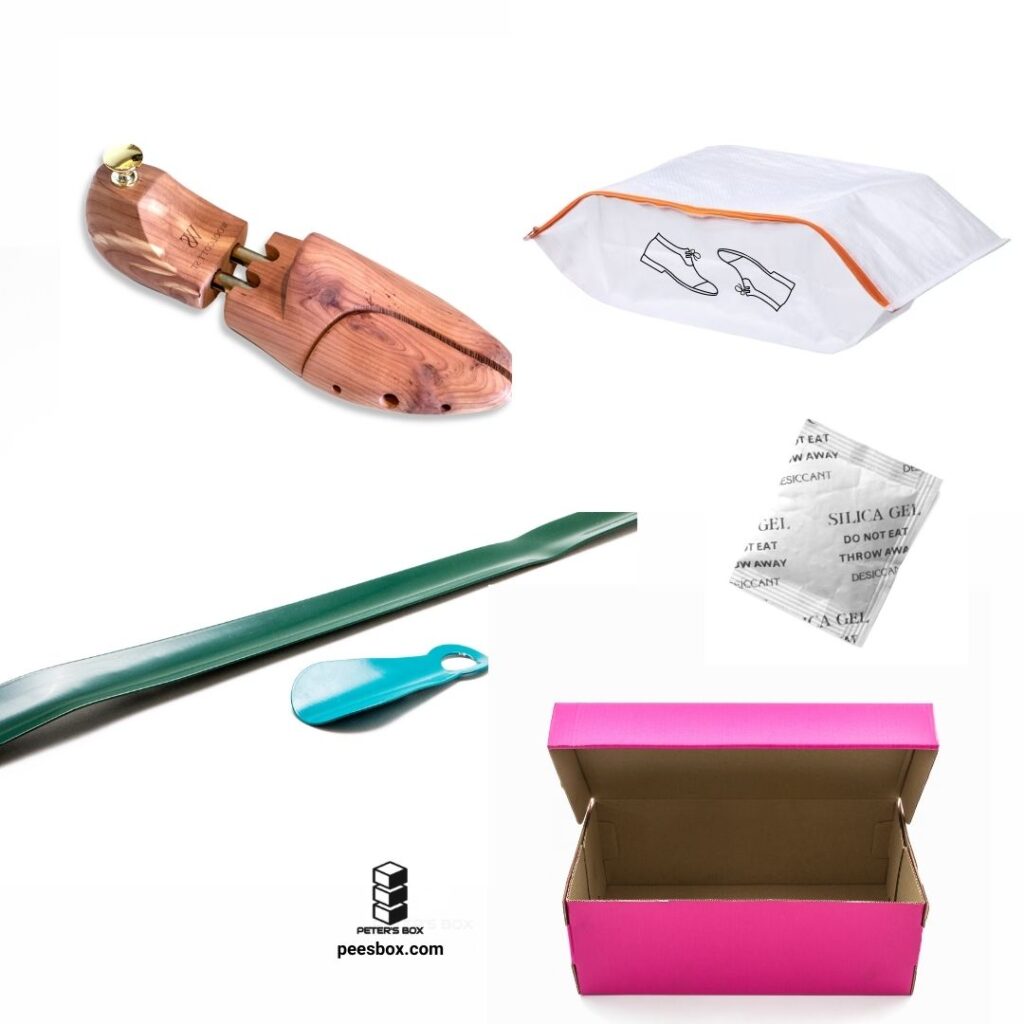
The Shoe Horn
A shoehorn is a slender bar that is typically made of plastic. It has a smooth surface, and the surface of one of its ends is dipped slightly. The shoehorn’s dipped surface serves as a wedge to guide your heel into the shoe. Instead of pulling against the cap with your fingers, just insert the shoe horn (the portion with the dipped surface) into the shoe against the cap, then slide the heel of your leg on the shoehorn into the shoe. As easy as it sounds, it keeps the cap of your shoes in good condition. The lifespan of your shoes will be doubled if you use a shoe horn. The free end of your belt can be used to help your foot fit into the shoe if you don’t have a shoehorn.
The shoehorn is also useful for removing your shoes. Holding your hand on the shoe cap and yanking your foot out of the shoe weakens the shoe cap and stitched soles. The proper technique to remove a shoe is to grasp the heel of the shoe and gently pull your foot out. When removing a shoe, avoid using the other leg to hold down the heel cap.

Flexing your shoe without unflexing it
When you walk, your shoes bend inward when you elevate your leg for the next step. The flex in the shoe relaxes as your foot touches the ground. A simple exercise can help you understand what is going on. Stand on your feet and bounce up on your toes, as if reaching for the top of a tall wardrobe. The more you try to push yourself up, the more your feet will bend at the toes. You may expect the same behaviour from your shoes as you walk. The shoe will eventually permanently bend due to repeated flexing and unflexing, much like a loaf of bread that has been folded in half.
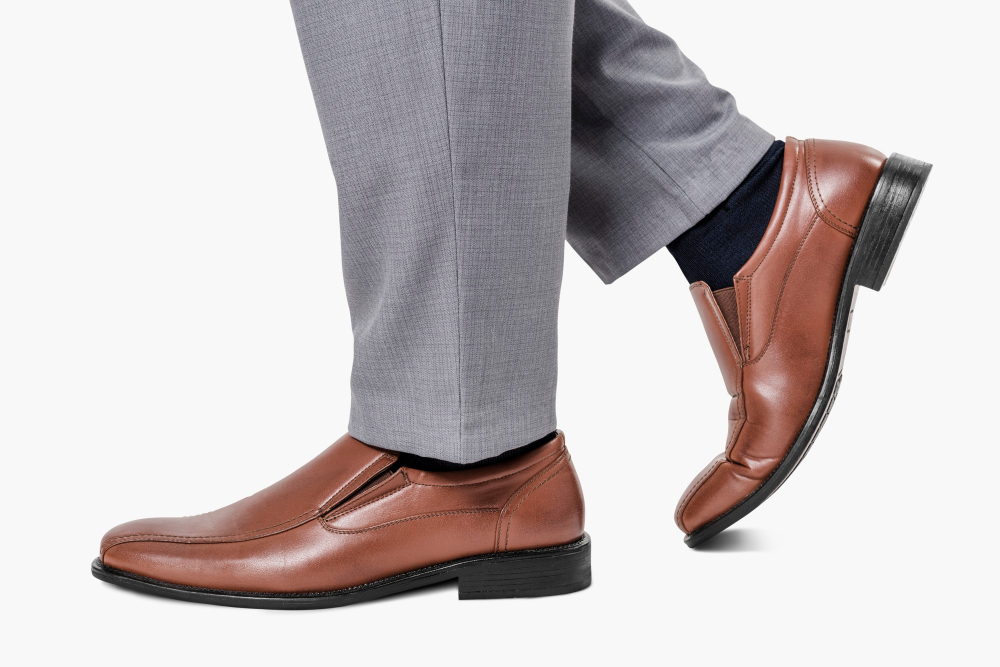
Again, shoemakers are aware of this, which is why there is so much filling inside the opening of a new shoe. The filling keeps the shoe in shape. Some new shoes are stuffed with old newspapers. Sometimes you may find plastic or rubber moulds fitted under the vamp of a new shoe; remember, the vamp is the part that covers the top part of your feet. These moulds maintain the shape of the shoe. When you get home from work and put your shoes on the rack or under the bed, over time, the bends and tears appear because the repeated bending of the shoe has worn down its ability to maintain its shape.
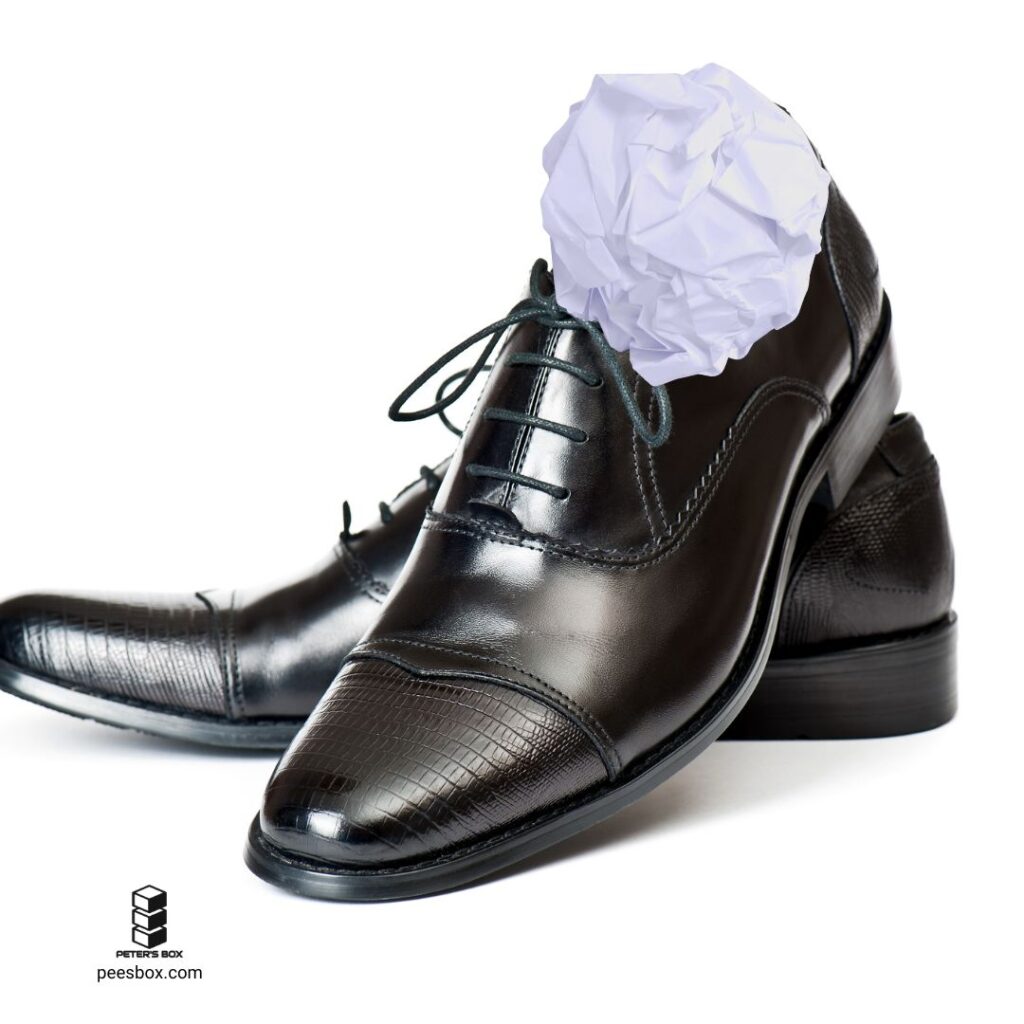
Shoe Trees
If you don’t want this to happen to your shoes, invest in a shoe tree. A shoe tree is an accessory that helps maintain your shoes in shape by filling them up while you are not using them. To properly fit in a shoe, a shoe tree is moulded to resemble your foot. This keeps the shoes firm. A spring runs through the centre of the shoe tree. The shoe is helped to stretch outward by the tension that the shoe tree’s spring creates. Any reputable shoe store will have a shoe tree available. It is recommended that you buy wooden shoe trees instead of plastic ones. This is due to the fact that wooden shoe trees can absorb moisture from the shoe. Wooden shoe trees made of cedar wood provide a lovely fragrance as well. The most important thing is to get a wooden shoe tree, whether it is cedar, poplar, or any other type of wood.
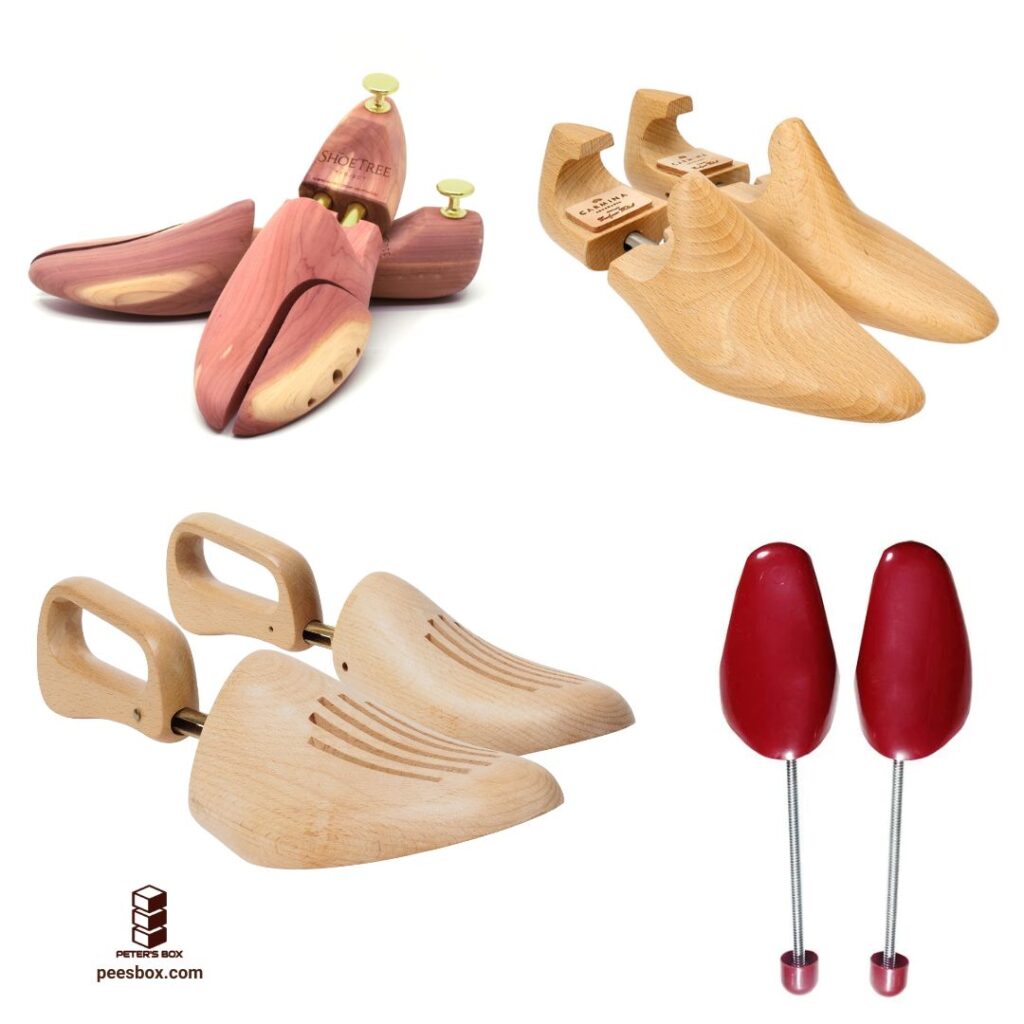
Throwing your office shoes away when the soles are damaged
Have you ever thrown away your shoes because the soles were beyond repair? Oh no! You have prematurely murdered your shoe! The soles can still be changed even when they are damaged. By changing the soles, your shoe can last a very long time. The body of an office shoe is sewn to the shoe’s soles. This implies that the shoe’s soles can be deliberately separated from the body at any moment, even if they are not damaged. Do you realise that this makes your favourite office shoe immortal? Instead of discarding the shoes, take them to any shoemaker who will replace the soles. Believe me, it’s as simple as it sounds. I have three pairs of shoes that are more than five years old. Their bodies are old, but their soles are brand new!
If you own a shoe horn and a shoe tree and replace the soles of your favourite office shoes on a regular basis, your son can inherit them!
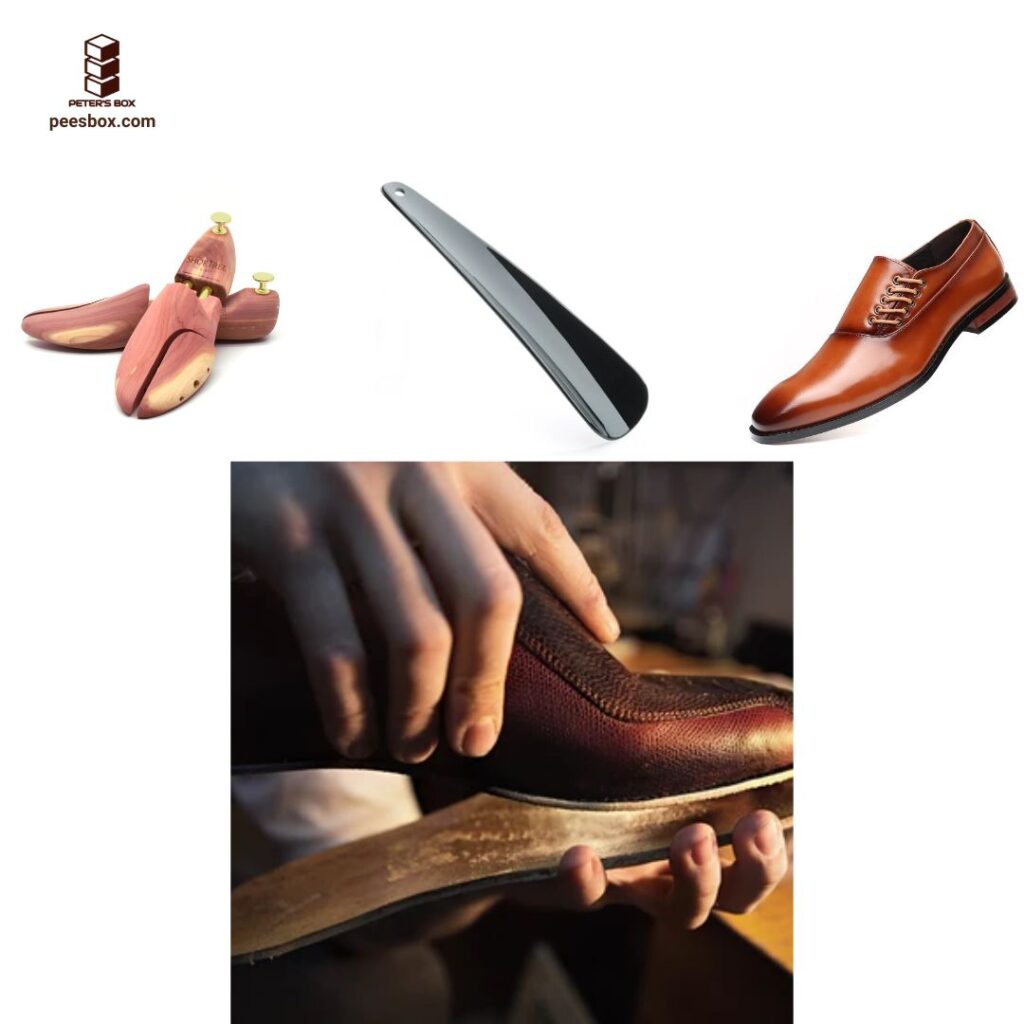
More shoecare tips
To even make your shoe last for generations, follow these shoe care tips. Add the following items to your shoe kit.
- Shoe cream
- Conditioner
- Shoe bag
- Shoe brush
Shoe Cream
The purpose of shoe cream is to replenish the moisture in the leather in order to prevent it from cracking. Additionally, it covers any scratches or scuffs and restores the leather’s original colour. Leather shoes dry out as you use them, so keeping them hydrated in between cleanings is essential. This isn’t your typical shoe polish. Shoe creams should be used sparingly and softly. Do not use large amounts of shoe cream on your shoes. Apply a little swipe of cream to the shoe and use a cloth to polish it softly. The frequency with which you wear your shoes will determine how frequently you should apply the shoe cream. If you wear your shoes every day, you should use shoe cream at least once a week. If you wear them once or twice a week, you should cream them once a month.
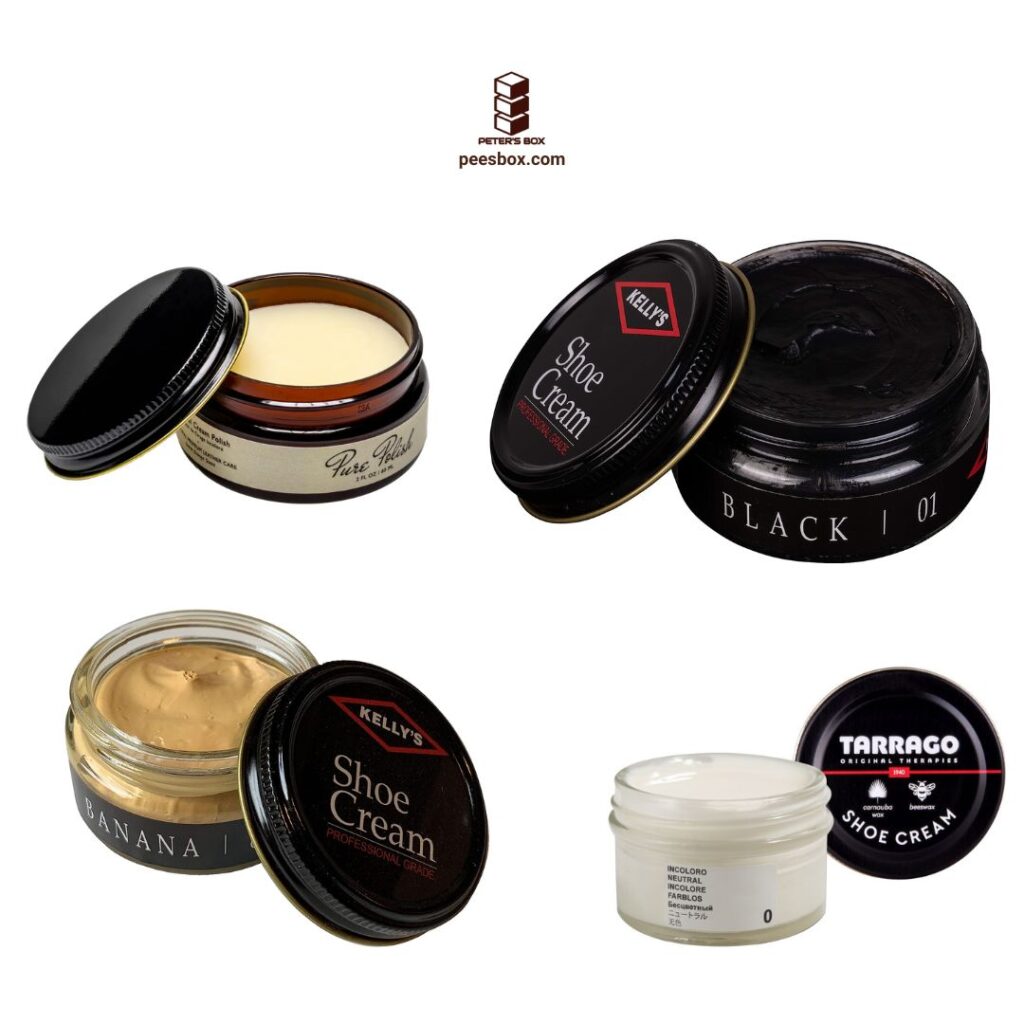
Conditioner
Leather is essentially the dried skin or flesh of an animal. Leather is moisturised and made softer with conditioners. This should be done often, especially if the leather appears to be dry.
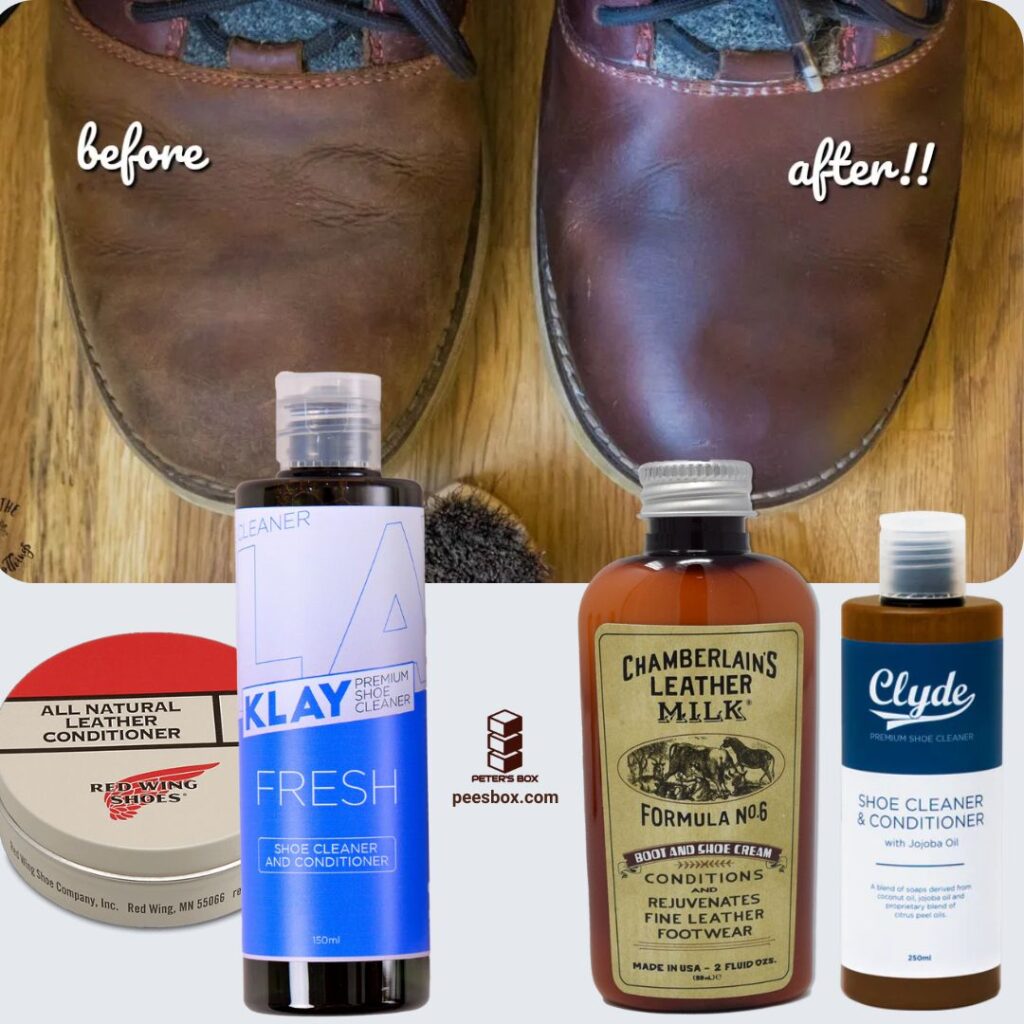
Shoe Bag
After unwrapping their new shoes, most individuals discard their shoe bags. They consider it garbage. Shoe bags are useful for two reasons. First of all, they shield the shoes from dust and other particles. Place the shoe in a shoe bag instead of keeping it exposed on your shoe rack or in the closet. Second, when you travel, how do you pack your shoes in your suitcase? Do you throw them in with your clothes? It is advisable to place your shoes in a shoe bag first before packing them in your baggage. This keeps your clothing from getting stained by your shoes.
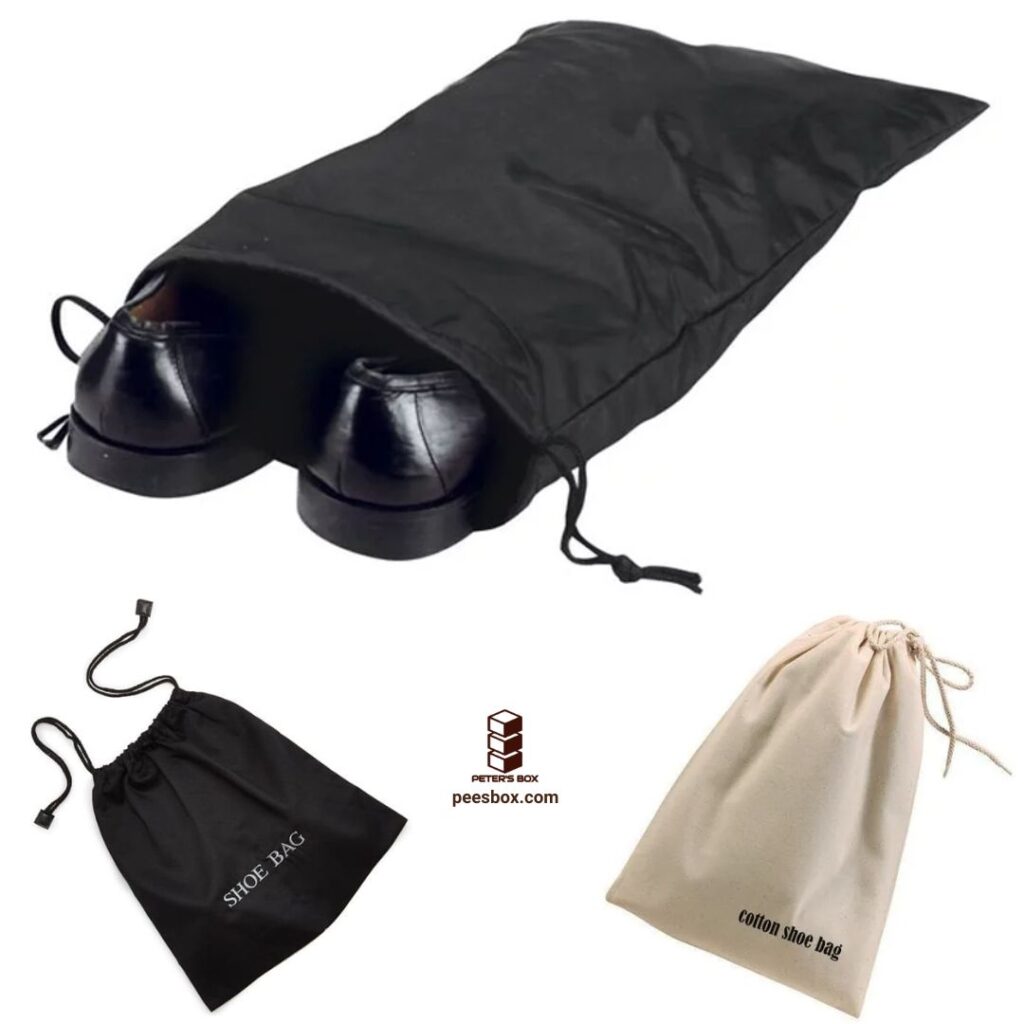
Shoe Brush
Shoe brushes are used to remove dirt from shoes. For various materials, there are several types of shoe brushes. Horsehair works particularly well on leather shoes. The bristles are flexible, allowing them to loosen debris caught in the grooves of your shoes. The many types of shoe brushes are covered in greater detail on FootFitter. To learn more, click here.
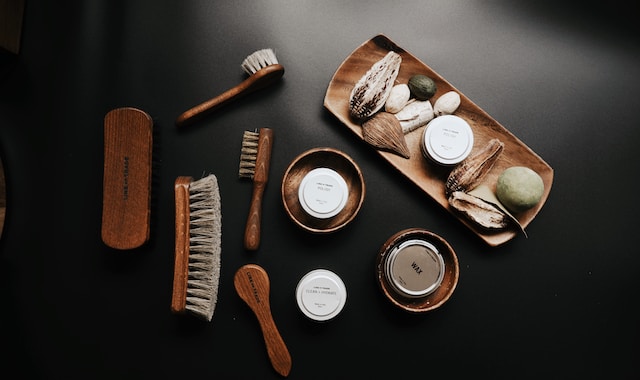
The Eternal Office Shoe
The benefits of proper shoe maintenance extend to your wallet as well as your shoes. Why buy new shoes every six months when you can keep your old ones as good as new? You know what you should do now.
Do not pull the heel cap of a shoe to make it fit. Instead, use a shoehorn.
Your shoes flex constantly when you walk. Over time, dents and creases form on the shoe. However, fixing a shoe tree in your shoes after walking in them prevents these creases and dents from forming. Don’t flex your shoes without also unflexing them with shoe trees. Shoe trees maintain the form of the shoe and also remove any moisture trapped there.
Do not discard the complete shoe when only the soles are broken on your favourite office shoes because they can be replaced. Get a shoemaker to replace them.

Finally, just because your shoe is in good condition and wearable does not mean it is presentable! Shoe creams, conditioners, and polish help your shoes look better. When cleaning your shoes, remember to use the proper brush.
Here are some extra tips for general wardrobe care: Learn these 10 Wardrobe & Clothing Maintenance Essentials from Sven Raphael Schneider, a specialist in gentleman’s clothing and the founder of Gentleman’s Gazette.
What’s next in Peter’s Box? ¡Hasta luego amigos!


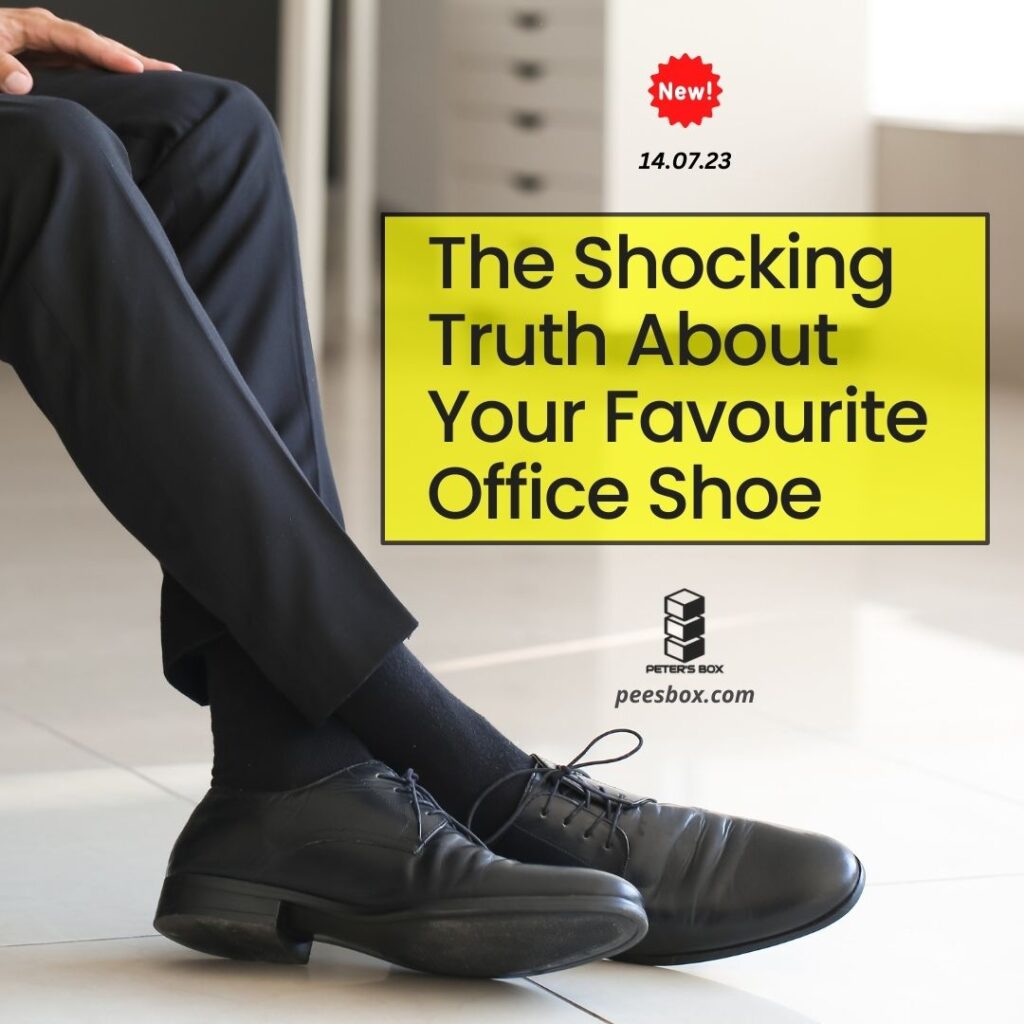


Thank you for that insight, very informative.
You are welcome Benjamin. Which tip was new to you?